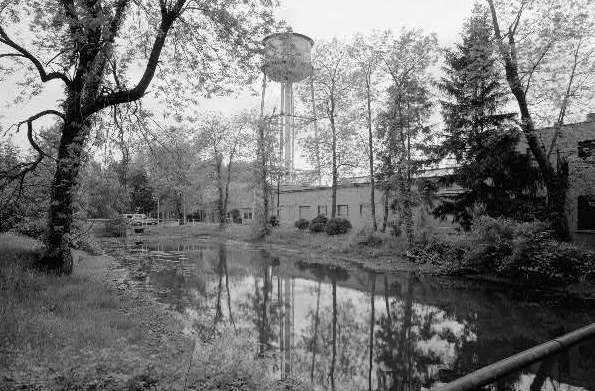Jaite Mill

During a trip on the scenic railway, visitors to the Cuyahoga Valley National Park will notice a collection of small yellow buildings clustered around the railroad crossing at Vaughn Road in Brecksville. Now the national park's headquarters, the buildings once comprised the railway depot and company village of the Jaite Paper Mill. A part of the valley's larger story of rising and falling industry, the Jaite Mill affected the lives of numerous valley residents in the early twentieth century.
Josephine Davis, who grew up in Brecksville in the 1920s and 1930s, remembers most of her immediate family members working for the Jaite Paper Company. During the twentieth century, competition from western agriculture made farming in the Cuyahoga Valley less profitable and more challenging. Although the Davis' farm produced enough food to feed her family, Josephine's parents, brothers, and sisters needed to help supplement the farm with additional income. For valley residents in Brecksville, Boston, and Peninsula, the Jaite Paper Company offered jobs conveniently close to home.
Charles Jaite founded the Jaite Paper Company in 1905 and purchased acreage in Northfield Township to begin construction. Charles, who emigrated from Germany as a young boy, had a history of paper manufacturing experience. At the age of thirteen, Charles worked at a paper mill in Cleveland, and eventually became the president of Standard Bag and Paper Company, and vice-president of the Cleveland Paper Company. Both businesses eventually became the Cleveland-Akron Bag Company, which opened in 1900 in Boston, Ohio. In July 1905, Charles resigned and decided to found his own business.
The Jaite Paper Company provided local farmers with extra construction work to create the buildings and connecting railroad. The mill's location provided easy access to the Ohio & Erie Canal and the Cleveland Terminal & Valley Railroad. In addition to providing jobs to local farmers, both the Jaite Mill and Cleveland-Akron Bag Company altered the ethnic makeup of the valley's population. Large numbers of Polish and other immigrants moved from Cleveland south to the valley to find work in the paper-making business.
By 1918, the mill employed about 250 people, including women who sewed bags and provided administrative help. Male workers used cylinder machines to produce "Blue Line Paper" for flour and cement bags. By 1919, the Jaite workers expanded production to include fertilizer bags and bread sacks. These workers made up the company town, which included homes, a general store, post office, and railway station.
Unable to compete with larger paper bag manufacturers, the Jaite family sold their company in 1951. The company exchanged hands several times before becoming a part of the Cuyahoga Valley National Park in 1975.
Audio
Images








